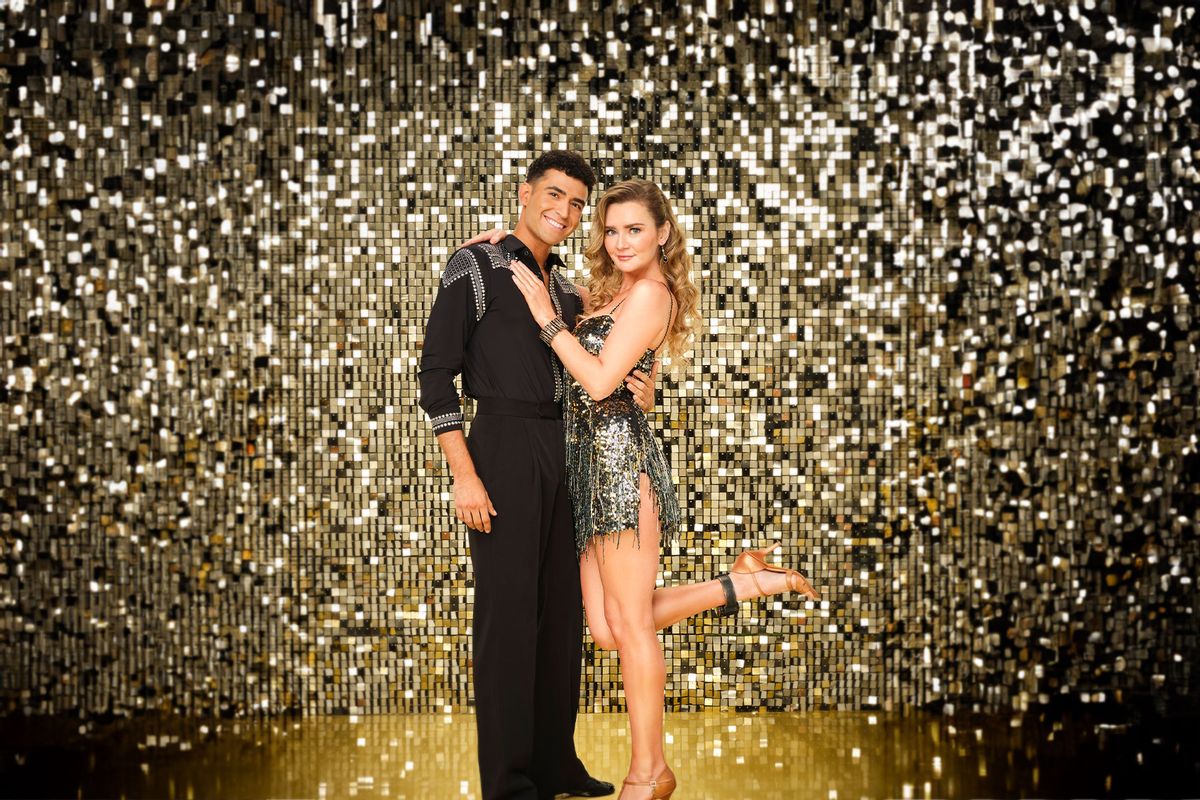Entertainment
Anna Delvey on “Dancing with the Stars” isn’t “brat,” it’s sad

When it was announced a couple of weeks ago that faux heiress and convicted grand larcenist Anna Delvey would be competing in the 33rd season of ABC’s “Dancing with the Stars,” the consensus reaction was, “Of course she is.” Because criminals being made into celebrities is very much a thing now.
Sentenced to four to 12 years in prison in 2019 for scamming businesses and wealthy elite out of $250k to live a lavish life of glamor and opulence that most would strain to imagine, Delvey’s name is among a running list of felons turned celebrities that includes “Party Monster” killer Michael Alig, Gypsy Rose Blanchard and, in some respects, former president Donald Trump — proving that the consequence of one’s actions now, more times than not, leaves room for residuals and, most importantly . . . ratings.
Competing this season with dance partner Ezra Sosa, an internet personality and familiar face to fans of “DWTS” who has been dancing since he was two years old, Delvey is up against “90210” star Tori Spelling, NBA champion Dwight Howard, Jenn Tran from “The Bachelorette,” Olympic pommel horse darling Stephen Nedoroscik, actor Eric Roberts and “The Real Housewives of Atlanta’s” Phaedra Parks — none of whom sport federally mandated ankle monitors in their press photos, as she does. And none of whom answered the host’s question, “How do you feel?” after their dance of the evening with, “I feel happy that I don’t have to do this dance again.” But guess which one closed out the episode as its grand finale? Yeah, you guessed right. The one with the rap sheet.
Watching her co-competitors give it their absolute all — especially Roberts, who is still navigating around injuries from a serious car accident that landed him in a three-day coma in 1981 — It felt all the more grating to suspect from the jump that the show was saving its “best” for last. Moreso, when Delvey appeared on stage surrounded by shopping bags and danced like a wooden doll with dead black eyes to Sabrina Carpenter‘s “Espresso,” earning a score of straight 6’s (writer performs sign of the cross) which she would have received even if Sosa had just dragged her around by her hair flat like a mop on the confetti littered stage for a solid four minutes. It’s all too much. But is Delvey’s name at the top of every write-up about this new season? Yes. And am I adding to that right this very moment? Yes.
But why? God, I guess we just can’t help ourselves, can we? If it bleeds, it leads. And if it’s a sin, it sells. The villain will always be more interesting than the hero. Sucks to be true.
In 2014, just days after Michael Alig was released from a 17-year stay in the New York prison system for killing fellow club kid Andre “Angel” Melendez in 1996; dismembering him, dumping bleach on his remains, putting them in a box and dumping him in the Hudson River; I interviewed Alig across from Ray’s Candy Store on a bench in Tompkins Square Park. I bought him his first Cronut, which he cried while eating. I had my picture taken with him. I got paid for the article I wrote about him for Bedford + Bowery, a site run in collaboration with New York Magazine. I used that money to help pay my rent. And I re-read the article when, six years later, I read a headline from another publication saying that Alig had died from an accidental heroin overdose. The whole thing was like a match being blown out. Hot hot to get the interview, then a little stinky and smudged afterward. But, so many years later, would I still jump at the chance to interview Blanchard or Delvey? You bet I would. Why? See all of the above.
When Alig and I took our photo together on that park bench, he hit my messy bun with his arm and my whole body turned to stone like I’d come inches from stepping on a snake. He laughed. Because he knew. And it was thrilling, like riding a roller coaster. And although Delvey has never dumped anyone in a river, that we know of, this is the same appeal she has to “DWTS” viewers. And they know that too, which is why they closed the show with her, and not poor Tori Spelling.
The Donna Martin-ish people of the world never graduate. How tragic.
Want a daily wrap-up of all the news and commentary Salon has to offer? Subscribe to our morning newsletter, Crash Course.
Delvey being referred to as an entrepreneur by the show’s host, Alfonso Ribeiro, got some funny reactions from viewers lobbing their takes on social media, but seeing her on stage with but one identifiable thought in her head — “Everyone here is so poor” — she would, I’m guessing, 100% agree with that description of her. An entrepreneur being someone who takes on greater than normal financial risks in order to run a business? Yeah, that’s her. But, going by that definition of the word, it describes the show as well.
When asked by a co-host of “DWTS” on Monday why she wanted to be on the show, Delvey smiled with her mouth but not her eyes, saying, “Just . . . Why not?” That answer, mixed with a flash to the audience where I swear I saw the haunted image of JoJo Siwa seated amongst the rest of the spectators, gave me the same “almost stepped on a snake” feeling I had when I was interviewing Alig. Are we in hell? Why are we doing this to ourselves? And why does dancing have to be a part of it?
Delvey’s ankle monitor — which she’s court-ordered to wear for the foreseeable future while under house arrest following immigration court proceedings for overstaying her visa — was as much of a prop in her performance as the shopping bags at her feet on the stage, both winks to her crimes.
In an interview with Women’s Wear Daily ramping up to the premiere of the first episode on Tuesday, “DWTS” costume designer Daniela Gschwendtner detailed her plans for making the “accessory” work on the show, saying, “We’ll try to probably do something fun with it — make it sparkly, maybe. We’re going to try and do something fun with it so it becomes part of the costume. The costume itself won’t be affected by it,” adding that she’ll “try to do something cute with it to make it look all pretty together.”
Honestly, aside from Delvey’s checked-out expression and refusal to join in on the fun with her co-competitors — like when some of the dancers were doing boxing hands at each other while Delvey stood with her arms out awkwardly like a T-Rex — the ankle monitor was all I could see. I think that was the point.
“I need me a woman who’s a little nefarious. A woman who does white-collar crimes for funzies. A woman pairing an ankle bracelet with her ~*couture*~. Anna Delvey, if you will. She’s my dream woman,” wrote one viewer in a post to X, days before the show aired, like parading crime is now part of this “brat summer” we’ve all been hearing about.
And although the specificities of Delvey’s crimes were, quite literally, danced around in this first episode of the season, make no mistake that they were the problematic highlight.
“I just wanna say something. When you came out on the dance floor there was a shift in the energy in this room,” one of the judges, Carrie Ann Inaba, said to Delvey after her performance. “And I would just like to say, let’s all just give this a chance, because I can imagine that this is scary for you, and I’m not pro, or for, against anything that you’ve done. But this is about your dancing here.
Yeah. Sure it is.
Read more
about this topic










